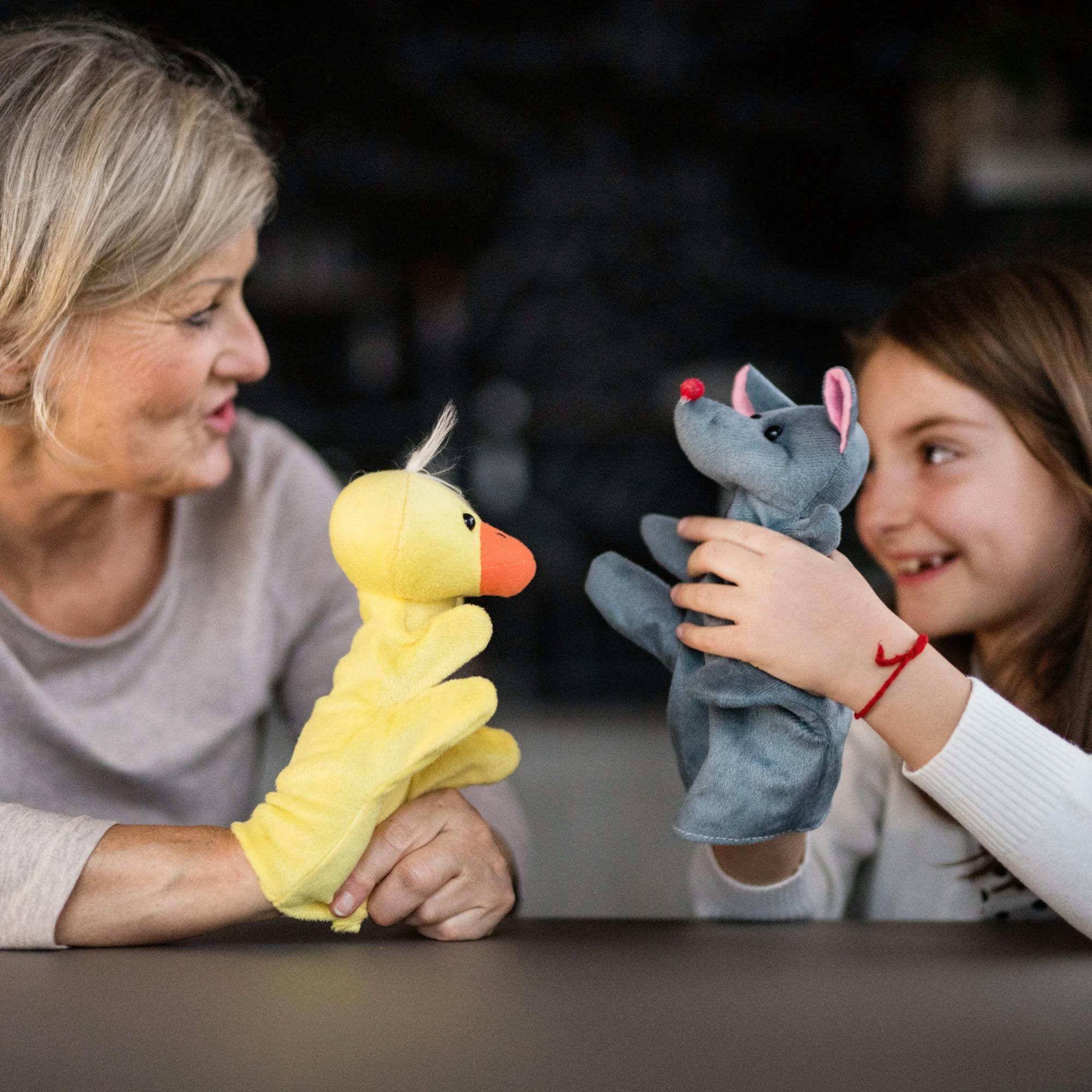As children begin to talk, there are typically a few speech sounds in the English language that they learn to make first.
Think about when a baby starts to babble. You might hear a lot of “mamama” or “bababa.” As their babbles and speech sounds grow, they’re likely to say first words that use earlier developing sounds. These are typically /m/, /b/, and /p/. As they reach toddlerhood, you’ll likely begin hearing them use the /d/ sound as well.
Here’s how to help your child start saying these early sounds correctly, as well as signs that your toddler may need speech therapy.
Tips for practicing early developing sounds at home
When you’re teaching your child to talk, here are some important tips to remember:
Make sure your child is facing you as you work together. This helps direct their attention to you and prompts them to watch your mouth.
You can also point to your mouth, or hold up items up near your mouth to direct your toddler to look.
Try not to overcorrect your child or stress too much about them saying the sound as you practice. Give them lots of chances, but keep things relaxed. The more stressed they feel, the less likely they’ll be to say the sound.
When learning a speech sound, repetition is key. So be sure to give your toddler lots of opportunities to practice.
Teaching your child the /m/ sound
Model, or demonstrate, the sound for your child with emphasis: “mmmmmm.” Think of how you might say something like “Mmmmm, yummy!” This is a fun sound to try while pretending to eat or cook, or while you’re actually eating a snack together! You can comment how good it tastes with the “mmmm” sound.
Remind your child that their lips should be closed. You can point to your closed lips, and even tap their lips to prompt them to close them.
When you have a chance to use words that have this sound, point them out! If you're reading a book with a monkey in it, say that word with overemphasis: “mmmmmonkey!” Or if it’s nighttime, you can look out the window and say “That’s the mmmmmmoon!”

Teaching your child the /b/ sound
Model the sound for your child and emphasize it over and over: “B-b-b!” Show your child that your lips should close, but then burst open to form the /b/ sound.
On top of that, their voice should be “on” when making this sound. If they’re making a /p/ sound, their voice is not on. The /p/ sound does not use the vocal cords, but /b/ does. So your child should feel a buzzing in their throat when they pronounce /b/. Let them touch your throat as you say the sound so they can feel the buzzing sensation. You can also touch their throat and give feedback like, “I don’t feel the buzzing!” or “I feel it! Your voice is on!”
Try words like “ball,” “bubble,” “blue,” or “boom!” There are so many fun words you can use to emphasize this sound as you play or read together!


Teaching your child the /p/ sound
Your cues, or the hints you give your child, for /p/ will be similar to /b/. The lips need to come together, but the voice is not turned on, and there’s no buzzing sensation in the vocal folds. Give your child cues like “Keep it quiet!,” almost as if they’re whispering. This may help them make the correct /p/ sound.
You can also remind them to keep their lips together, then “pop” them open quickly. Practice words like “pop,” “puppy,” “pick,” or even “hop.”
Teaching your child the /d/ sound
You may hear babies start to use this sound, but it also could come later on in toddlerhood, around age 2. So keep this in mind as you practice.
With this sound, it helps to give your child lots of visual cues. Make sure they’re really looking at you. Smile and point to your mouth. Say “da! da!” Overemphasize the closed mouth portion of the sound, where the tongue is up behind the teeth, and emphasize your mouth opening for the “ah” part of the sound.
You can even keep your mouth open slightly at the beginning of the /d/ sound so that they see your tongue elevate.
Like all the other sounds, be on the lookout for /d/ words to practice as they come up!


What if my child is having a hard time with early sounds?
If your child is having a hard time making some of these sounds, you may be curious what it means. Are they simply a late bloomer?
Let’s first talk about their age. If your child is a baby or young toddler, it may be that they’re just slightly behind and will begin saying these sounds soon. There is some variability in sound usage at this age, and no child’s speech is 100% correct at first.
However, if your child is 18 months to 2 years old and you’re not hearing them say most of these sounds consistently, this could be a sign of a few things.


Speech delay
Your toddler might be behind in their expressive language skills, also known as a speech delay. Sounds are the building blocks of words. If you aren’t hearing many sounds, or early words or phrases, your child might be having trouble reaching some of their early communication milestones. This is the right time to talk with your pediatrician and visit a speech therapist to be evaluated for a speech delay.


Childhood apraxia of speech
If your child is around age 2, makes very limited speech sounds, doesn’t say many words, and is considered a quiet kiddo overall, these could be early signs of childhood apraxia of speech. Keep in mind, there is a lot of overlap in the symptoms of an early diagnosed speech delay and those of apraxia. But if you see these signs, it’s important to have a speech evaluation. Here are some more specific signs of childhood apraxia of speech:
Inconsistent errors in speech: A child with apraxia may pronounce the same word differently each time they say it. For example, one day they may say a difficult word correctly, but soon after they have trouble with it.
Distorting sounds: Because people with apraxia do not place their mouth muscles in the right position, sounds often come out incorrectly. Pronouncing vowels can be especially hard, as well as longer words.
Groping for sounds: People with apraxia can seem like they’re “groping” or struggling for words. They may try saying a word several times before they say it correctly.
Inappropriate intonation, stress, or rhythm of words: Kids with apraxia may struggle with the rhythm and flow of speech. They may segment syllables in a word, omit syllables in words altogether, or pause inappropriately while speaking.
Difficulty with volitional movements: A person with apraxia may have a tough time initiating what they want to say, such as asking a question or making a comment, as compared to more automatic speech, such as counting or saying the alphabet.
Speech sound disorder
If your child is age 2 or older, and they’re having trouble pronouncing words correctly, they may have a speech sound disorder. For example, if they say “hah” instead of “hop,” or “gohg” instead of “dog,” there may be articulation or phonological problems present. Again, if you see these signs, it’s best to speak with a speech therapist and have an evaluation.
How do I find a speech therapist for my toddler?
There are several ways to find the right speech therapist for your family. Even if you aren’t sure if your child needs therapy, go ahead and reach out! You can ask questions, get professional input, and then decide on next steps.
Expressable: Expressable online speech therapy offers a nationwide team of licensed speech therapists with a range of specialties. Expressable matches you with a speech therapist for an evaluation based on your needs, location, and availability (including evenings and weekends!). You can start the matching process here.
Doctor or pediatrician recommendation: Your health care provider may be able to give you a referral to a local speech therapist.
Insurance company: If you have health insurance, contact them to better understand their policies and coverage for speech therapy. They may have a list of in-network speech therapy providers that you can research and contact.
Online directories: There are several online directories where you can search speech therapists by location and qualifications. One of these directories is compiled by the American Speech-Language-Hearing Association (ASHA), which is the professional credentialing organization for speech-language pathologists.
No matter the reason your child isn’t saying early sounds yet, there will be a speech therapist who can help. Don’t hesitate to reach out and get your questions answered!
How Expressable Can Help
Concerned your child isn't reaching age-expected milestones? Looking for communication support from a professional? Expressable is a national online speech therapy practice serving children and adults. We treat all major areas of communication and feeding, offer flexible hours including evenings and weekends, and accept most major health insurance plans. We’re proud to have earned more than 3,000 5-star reviews from our clients (4.9/5 average).
Our therapy model is centered on parent and caregiver involvement. Research proves that empowering caregivers to participate in their loved one’s therapy leads to better outcomes. That’s why we combine live, 1-on-1 speech therapy with personalized education and home practice activities for faster progress.
Communication is more than words. It’s how we share how we feel and show who we are. We’re here to help you or your child do just that.

 Abby Barnes, M.S., CCC-SLP
Abby Barnes, M.S., CCC-SLP










